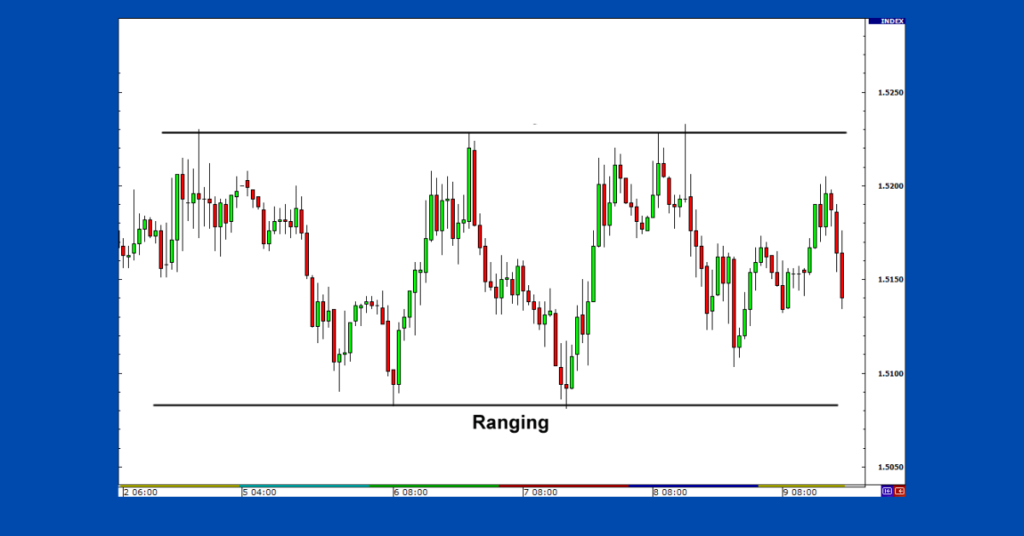Unlike trending markets, where prices move up or down, sideways markets lack clear direction. Identifying and trading in a sideways market helps traders avoid false signals and improve their strategies.
In This Post
What Is a Sideways Market in Forex Trading?
A sideways market happens when supply and demand are balanced, keeping price movements within a defined range. Instead of trending up or down, prices bounce between support and resistance levels.
This usually occurs during consolidation before the price continues a prior trend or reverses into a new trend. Prices move between strong support and resistance levels. A horizontal trend can dominate an asset’s price action for a long time before shifting higher or lower.
These consolidation periods are necessary during prolonged trends since large price moves rarely sustain themselves over time.
Volume, an important trading indicator, mostly remains flat in a ranging market due to an equal balance between bulls and bears. It spikes in one direction when a breakout or breakdown is about to occur.

Example of a Sideways Market
If EUR/USD trades between 1.1000 and 1.1200 for weeks without breaking out, it is in a sideways market. Traders buy at support (1.1000) and sell at resistance (1.1200).
How to Identify a Sideways Market
Sideways markets can be identified using technical analysis. Prices oscillate between support and resistance, showing the following patterns:
Flat Moving Averages
When short-term and long-term moving averages flatten, it indicates a lack of trend.
Price Stays Between Support and Resistance
The price repeatedly bounces between key levels.
Low Volatility
Sideways markets often have smaller price movements and reduced momentum.
RSI Near 50
The Relative Strength Index (RSI) stays around the midpoint, signaling no strong trend.
Conclusion
A sideways market occurs when price moves between strong support and resistance levels without a clear trend. It is common to see a horizontal trend dominate an asset’s price action for an extended period before a breakout occurs.
These consolidation periods often appear during extended trends, as maintaining strong price movements over time is difficult. Sideways markets are frequent in forex trading and offer range traders unique opportunities. By identifying key levels and using technical indicators, traders can develop successful strategies.
Understanding sideways markets helps traders make better decisions, whether they are trading within a range or preparing for a breakout.
Related Term



